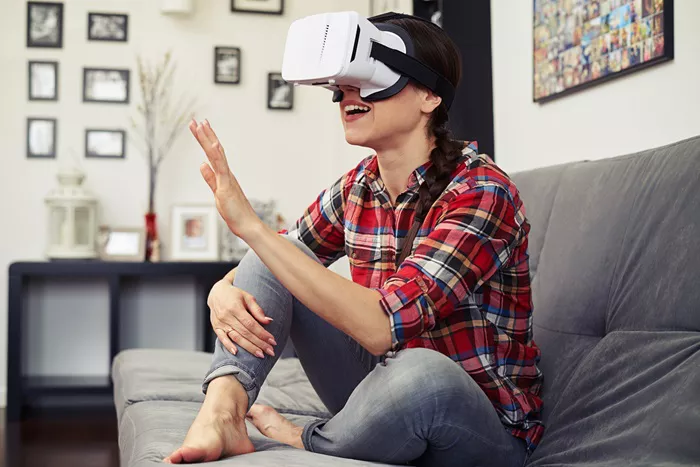Everyday experiences—like delivering a work presentation, mingling at a crowded party, or navigating a difficult conversation with a partner—can quickly become major stressors. While talking to a friend or therapist often helps, researchers at Carnegie Mellon University are exploring a more immersive approach: practicing these scenarios through virtual and augmented reality (VR/AR).
A new project led by Anna Fang, a graduate student in the Human-Computer Interaction Institute within CMU’s School of Computer Science, aims to help people build real-life coping mechanisms by simulating anxiety-inducing situations. The team will present their findings at the upcoming Association for Computing Machinery Conference on Human Factors in Computing Systems (CHI 2025).
The concept builds on exposure therapy but introduces a technological twist: users wear VR or AR glasses to rehearse high-stress encounters—like speaking before a digital audience or managing a simulated conflict. In an early study involving 19 participants, the technology received widespread support.
“For the past 10 to 20 years, virtual and augmented reality have become increasingly common in mental health applications,” Fang said, noting the rise of meditation and relaxation apps. However, she pointed out a key shortfall in most of these tools: they often place users in artificial, serene environments—like tranquil beaches or forests—which makes translating those skills to real-life situations challenging.
“This project came from a desire to develop a practical way for people to learn self-care skills they can actually apply in their daily lives,” Fang explained. “Can we recreate an office setting or simulate a personal disagreement, so users can practice self-regulation in an environment that closely mirrors the real world?”
To explore this question, Fang and her team built 24 prototypes based on three stress-heavy scenarios identified through research: public speaking, crowded social events, and interpersonal conflict. These prototypes varied in design, combining virtual, augmented, mixed-reality, and text-based formats, and offering different interaction levels. In some simulations, avatars spoke and asked questions, while others remained passive.
Advanced prototypes included dialogue powered by large language models, allowing avatars to hold realistic conversations. Users also had access to in-simulation stress management tools, such as breathing exercises that appeared as overlays when activated via handheld controllers.
The feedback was largely positive. “We wanted users to explore different combinations and tell us what felt most natural,” Fang said. “Participants generally reported that the experiences felt authentic.”
Beyond realism, many users appreciated the opportunity to gain deeper self-awareness. They expressed a desire for tools that promoted self-sufficiency in managing stress—skills they felt were lacking in their daily lives.
Notably, participants preferred when the virtual coach or language model provided guidance only upon request, rather than offering it automatically. Others wanted to take the technology into specific environments to increase its relevance. For instance, one participant wanted to use the AR headset at home before confronting a partner, while another sought to rehearse a speech in the actual classroom where it would be delivered.
Looking ahead, the team is building a fully deployable version of the tool with the aim of releasing it on the App Store. This updated model will feature more realistic avatars with enhanced text-to-speech capabilities, improved facial expressions, and nuanced movements. For example, avatars will be able to express anger through furrowed brows or convey warmth with relaxed posture and tone.
“Tone of voice and body language can significantly influence how we perceive and react to stress,” Fang noted. “We’re making sure avatars behave in ways that reflect real human interactions.”
The upcoming version will also broaden its library of self-care tools. While the current version emphasizes breathing exercises, the next release will include body scanning, grounding techniques, and relaxation methods aimed at managing anxiety and panic attacks.
“We want people to not only learn these strategies but also to explore and personalize them,” Fang said. “By experimenting in a safe virtual space, users can determine which self-care techniques work best for them—and then carry those tools into the real world.”
Related topics:
Economic Change Widens Life Expectancy Gap
Antidepressants Tied to Higher Sudden Cardiac Death Risk


